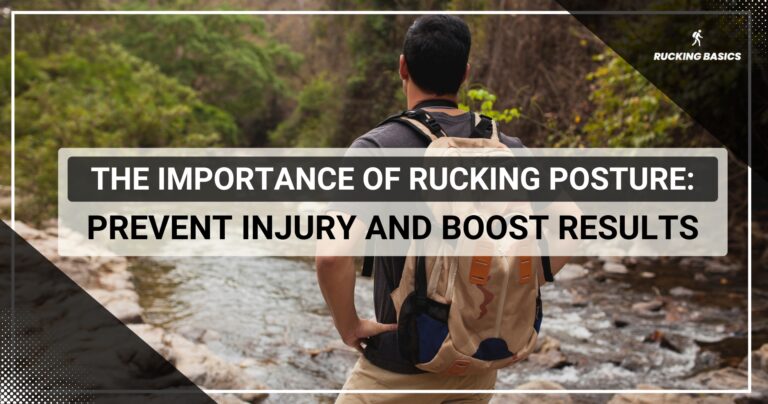I know the pain of frustration caused by not being able to recover and return to your previous rucking state as fast as you would like to. I’ve been there, and I can tell you that the post injury rucking shortcuts will only lead you to more injuries.
There are some essential rules you must follow to recover safely and return to your previous state of rucking. Let’s start by covering when you should actually start rucking again post-injury. Then, we will proceed with some of the best tips that helped me recover safely while also allowing me to enjoy all the good things that come with rucking.
When Should I Start Rucking Again After My Injury?
Post-injury rucking should only begin after receiving clearance from a healthcare provider. This professional guidance ensures that your body has healed sufficiently and reduces the risk of re-injury. The timeframe for this can vary significantly depending on the nature and severity of your injury, whether it’s a minor shin splint or a more serious foot injury [1].
The decision to return to rucking after an injury should never be rushed. I am well aware of the allure of outdoor trails and the added weight of a ruck that may call to you, but being patient is key in this phase of recovery.
Michael Easter, author of “The Comfort Crisis,” emphasizes the mental and physical benefits of rucking but also advocates for the importance of listening to your body and medical professionals before resuming strenuous activities.
Adapting your rucking routine post-injury involves more than just resuming where you left off. It requires a careful assessment of your current fitness level, the weight you can safely carry, and the distances you can traverse without risking your recovery.
For some, specific conditions like rucking with scoliosis may require even more tailored adjustments. This can include reducing weight, improving posture, or shortening distances to protect your body as it recovers.
The National Guard and Mountain Tactical Institute offer structured training programs that emphasize gradual increases in physical activity, strength training, and the strategic use of rucking accessories like weighted vests or ruck plates to prevent overuse injuries.
8 Post Injury Rucking Tips for Faster Recovery and to Avoid Re-Injuring Yourself
I know from experience that recovering from just about any injury requires a well-thought-out approach, assuming you want to recover and avoid re-injuring yourself fully. You can easily get baited into doing everything with full power and speed, and this is one of the reasons I compiled a list of the most useful tips regarding a comeback from such injuries.
Start Slower and Progress Gradually
As a rucking enthusiast recovering from an injury, it’s crucial to ease back into the activity with caution. Start with lighter loads in your backpack, opting for softer rucking gear like a weighted vest that evenly distributes the weight.
Gradually ramp up the weight as your strength and endurance rebound, always attentive to your body’s cues to prevent overloading your healing muscles and joints. By the way, this is all about following the most useful strength training principle called progressive overload.
You may want to check all other factors you can potentially alter with the principle of progressive overload to make your rucking activities even more comprehensive and effective [2].
Also, some of the workout methods and recovery techniques tend to vary based on your age. You should also be aware that older people are at greater risk during the recovery period compared to the rest of the population. Check our guide about rucking for seniors to avoid serious rucking injuries and to understand some basic principles you must follow.
Focus on Proper Form and Technique
You should never ruck with improper form, especially post-injury, because it significantly heightens the risk of re-injury. Even though I am often all about unconventional training techniques and methods, post-injury time is never a good opportunity to experiment with alternative methods and exercise forms.
You should strictly engage in training that emphasizes the correct way to carry a ruck, ensuring your backpack or vest is snug against your body to prevent unnecessary strain on your back and shoulders.
Also, running with added weight requires a different posture and stride. I suggest refining these with guidance from fitness professionals familiar with military training techniques.
Perform Dynamic Warm-Ups Before Every Rucking Session
Dynamic warm-ups increase your heart rate, muscle temperature, and flexibility, preparing your body for the added stress of weight and uneven terrain [3].
The proper rucking warm-up is key for avoiding injuries while also maximizing your rucking performance. You should perform movements that mimic the activity of rucking, such as leg swings and lunges, to target muscles and joints involved in rucking, reducing your injury risk.
Do a couple of reps and sets for movements in all planes, including sagittal, frontal, and transversal, to fully prepare your body for what’s coming ahead.
Strengthen Supporting Muscle Groups
You must strengthen your supporting muscle groups, which often serve as stabilizers and protect you from unwanted injuries. Incorporate strength training into your daily workouts and rucking activities to build muscle mass around key areas stressed by rucking.
Focus on exercises that enhance the strength and resilience of your lower back, core musculature, legs, and shoulders. The muscles you strengthen will not only support the extra weight you carry but also improve your bone density. This alone offers further protection from injuries like shin splints.
A strong core is particularly critical for safe and efficient rucking. If you’re not sure where to start, this guide on building rucking abs provides practical advice on core-strengthening techniques tailored for ruckers.
Consult With a Physical Therapist
Never start a recovery period without consulting with a professional who can save you days and hundreds of dollars. In my experience, a physical therapist can provide personalized information and design a training program that aligns with your post-injury recovery needs.
They usually recommend specific exercises that bolster your rehabilitation and suggest modifications to your rucking routine to ensure a safe return to physical activity. This tip alone helped me immensely after my first rucking injury.
Select Proper Rucking Gear
I know that gear can get expensive from time to time. However, investing in high-quality rucking gear that offers comfort and support is crucial for preventing additional injuries. Choose a backpack or ruck that fits well, with adjustable straps to secure the load close to your body.
Weight plates designed for rucking are preferable to unevenly distributed loads, which can cause imbalance and increase the risk of injury.
Work on Your Strength and Endurance
Working on your strength and endurance are effective measures you must take to return to your previous rucking conditioning safely. Balancing weight training with cardio exercises enhances both muscle strength and cardiovascular endurance.
This dual approach helped me handle the physical demands of rucking over long distances without succumbing to fatigue or pain. The result was a significantly reduced chance of an overuse injury.
Listening to Your Body
The most crucial tip is to listen to your body’s feedback. I know it can be hard because all you can think about is returning to your previous state of rucking and conditioning levels.
However, be aware that pain, discomfort, and fatigue are indicators that you may be pushing too hard or that your body needs more time to recover. So adjust your weight, distance, and pace based on these signals to maintain a balance between challenging yourself and respecting your body’s current limitations.
What Are the Most Common Rucking Injuries?
The most common rucking injuries are blisters, metatarsalgia, plantar fasciitis, stress fracture, shin splints, hip bursitis, etc. Each of these injuries can potentially set you back from enjoying your daily rucking sessions.
If you are curious to know the rest of the rucking injuries while also learning effective techniques to prevent each of them, check our guide on rucking injury prevention.
Wrapping Up
Returning safely to your rucking activities is all about granular progression and listening to your body. Beyond that, it’s crucial you participate in some form of endurance and strength training to fortify your body and allow for seamless movement without injuries.
My advice is to always start light, be mindful of your current situation, and to leave your ego inside the horse every time you start a rucking session. In the comments below, let me know your thoughts and experiences with rucking injuries and what was the hardest thing to overcome during the period of being injured.
Is Rucking Good For Recovery?
Rucking, as a form of physical activity, can be beneficial for recovery when done properly. It combines cardiovascular exercise with resistance training, promoting muscle strength and cardiovascular health, which are essential for recovery.
Does Rucking Mess up Your Back?
Rucking, if performed with improper form or excessive weight, can lead to back pain or injuries. It’s crucial to use a properly fitted backpack, appropriate weight, and maintain good posture to minimize the risk to your back.
Is Rucking Bad for Your Ankles?
Rucking can put stress on your ankles, especially when carrying heavy weights or traversing uneven terrain. To protect your ankles, it is advisable to wear supportive footwear, gradually increase weight, and strengthen ankle muscles.
How Much Rucking Is Too Much?
Too much rucking, characterized by excessive distance, weight, or frequency without adequate recovery, can lead to overuse injuries. Listening to your body and allowing time for muscle recovery and adaptation are key to preventing injury.
How Often Is It Safe to Ruck?
The safety of rucking frequency depends on individual fitness levels, the weight carried, and the terrain. Starting with once or twice a week and gradually increasing as your body adapts is generally considered safe for most individuals.
References:
- Kraemer W, Denegar C, Flanagan S. Recovery from injury in sport: considerations in the transition from medical care to performance care. Sports Health. 2009;1(5):392-395. doi:10.1177/1941738109343156
- Plotkin D, Coleman M, Van Every D, et al. Progressive overload without progressing load? The effects of load or repetition progression on muscular adaptations. PeerJ. 2022;10:e14142. Published 2022 Sep 30. doi:10.7717/peerj.14142
- Iwata M, Yamamoto A, Matsuo S, et al. Dynamic Stretching Has Sustained Effects on Range of Motion and Passive Stiffness of the Hamstring Muscles. J Sports Sci Med. 2019;18(1):13-20. Published 2019 Feb 11.







